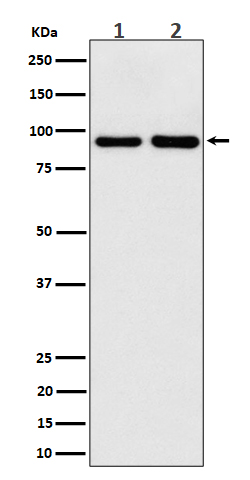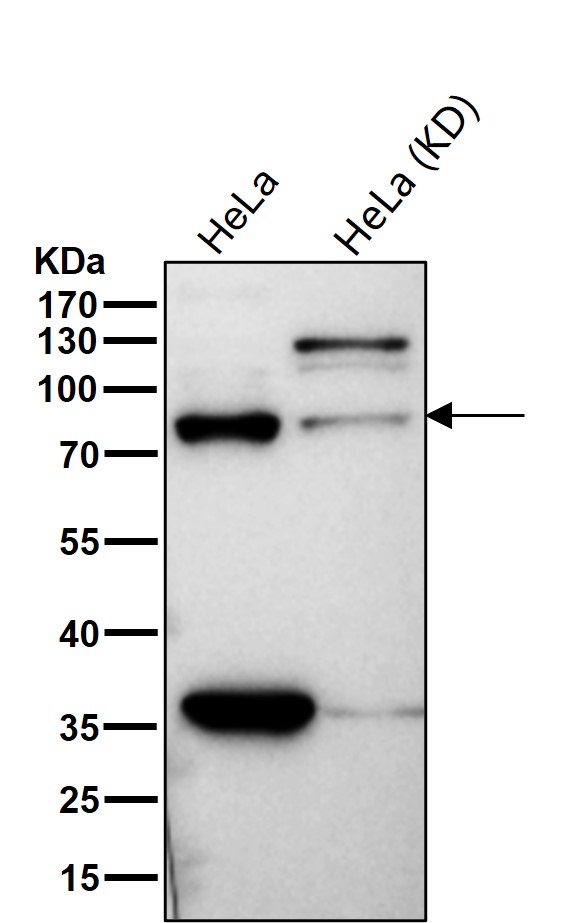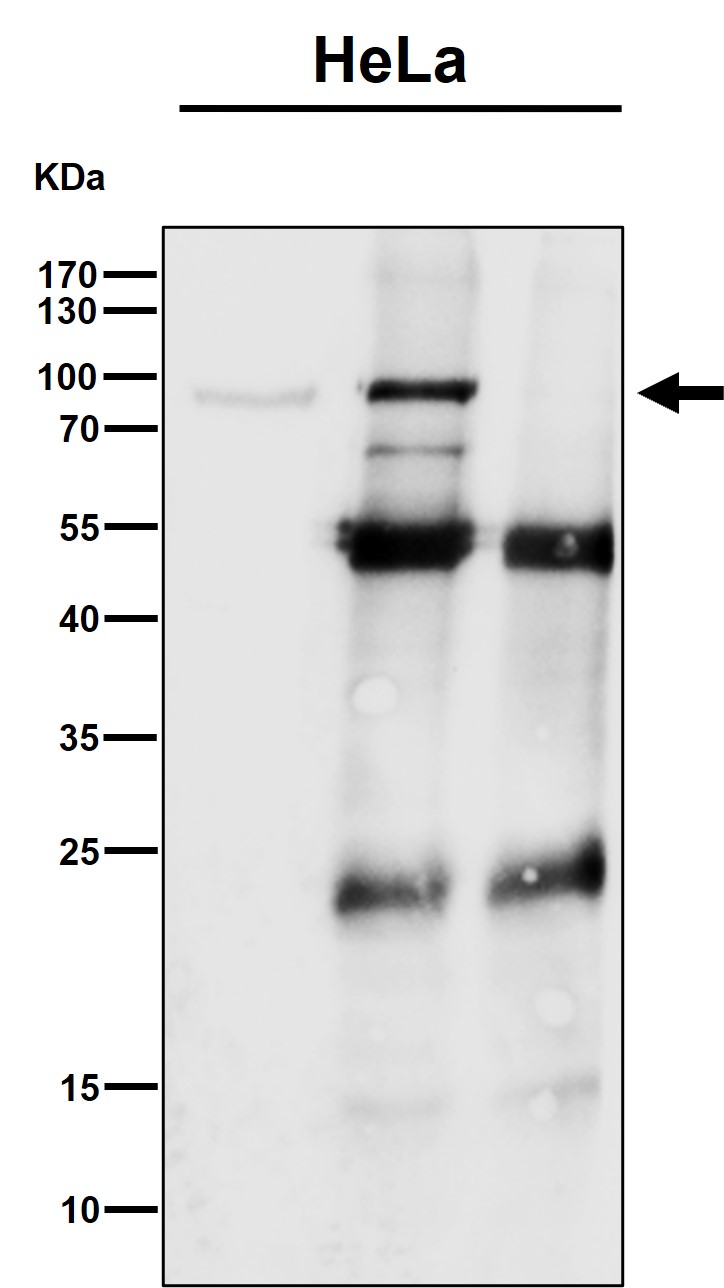


| WB | 咨询技术 | Human,Mouse,Rat |
| IF | 1/20-1/50 | Human,Mouse,Rat |
| IHC | IHC:1/100-1/200;IHF:1/50-1/200 | Human,Mouse,Rat |
| ICC | 1/50-1/200 | Human,Mouse,Rat |
| FCM | 咨询技术 | Human,Mouse,Rat |
| Elisa | 咨询技术 | Human,Mouse,Rat |
| Aliases | Csde1; NRU; UNR;;CSDE1 |
| WB Predicted band size | 89 kDa |
| Host/Isotype | Rabbit IgG |
| Antibody Type | Primary antibody |
| Storage | Store at 4°C short term. Aliquot and store at -20°C long term. Avoid freeze/thaw cycles. |
| Species Reactivity | Human,Mouse,Rat |
| Immunogen | A synthesized peptide derived from human CSDE1 |
| Formulation | Purified antibody in PBS with 0.05% sodium azide,0.05% BSA and 50% glycerol. |
+ +
以下是关于CSDE1抗体的3篇参考文献及其摘要概括:
---
1. **文献名称**:*CSDE1 (UNR) promotes colorectal cancer progression via stabilizing *BRAF* mRNA*
**作者**:Zhang Y, et al.
**摘要**:该研究揭示了CSDE1通过结合并稳定BRAF mRNA促进结直肠癌侵袭的机制。研究中利用CSDE1抗体进行免疫印迹和免疫组化实验,证实CSDE1在癌组织中高表达,并与患者预后不良相关。
2. **文献名称**:*Cold shock domain-containing protein E1 regulates post-transcriptional gene networks in glioblastoma*
**作者**:Wurth L, et al.
**摘要**:本文通过RNA免疫沉淀测序(RIP-seq)结合CSDE1抗体,鉴定了胶质母细胞瘤中CSDE1结合的靶mRNA,发现其调控肿瘤干性相关基因的翻译,推动肿瘤生长。
3. **文献名称**:*Antibody validation and functional analysis of CSDE1 in hepatitis C virus replication*
**作者**:Poulsen TM, et al.
**摘要**:研究验证了CSDE1多克隆抗体的特异性(通过siRNA敲低和Western blot),并证明CSDE1与丙型肝炎病毒RNA结合,通过宿主翻译机制促进病毒复制。
---
注:以上文献为示例,实际引用时需核对期刊名称、年份及具体实验细节。若需最新文献,建议在PubMed或Web of Science中检索关键词“CSDE1 antibody”或“CSDE1 + 研究领域(如癌症、病毒)”。
The CSDE1 (Cold Shock Domain Containing E1) protein, also known as UNR (Upstream of N-Ras), is an RNA-binding protein involved in post-transcriptional regulation of gene expression, including translation, stability, and localization of target mRNAs. It plays critical roles in cellular processes such as proliferation, differentiation, and stress responses. Dysregulation of CSDE1 has been linked to cancer progression, neurodegenerative diseases, and viral infections, highlighting its importance in both physiological and pathological contexts.
CSDE1 antibodies are essential tools for studying its expression, localization, and molecular interactions. Researchers use these antibodies in techniques like Western blotting, immunohistochemistry (IHC), immunofluorescence (IF), and RNA immunoprecipitation (RIP) to investigate CSDE1's regulatory mechanisms. For example, studies have shown that CSDE1 promotes tumor growth in cancers like melanoma and colorectal cancer by enhancing the translation of oncogenic mRNAs. Antibodies targeting CSDE1 help validate its overexpression in clinical samples, providing insights into its potential as a diagnostic or prognostic biomarker.
Additionally, CSDE1 antibodies aid in exploring its role in neuronal development and stress granule formation, relevant to neurodegenerative conditions such as Alzheimer’s disease. Commercial CSDE1 antibodies are typically raised in rabbits or mice, with validation across multiple applications to ensure specificity. Ongoing research continues to uncover CSDE1's multifaceted roles, driving demand for reliable antibodies to support mechanistic and therapeutic studies.
×